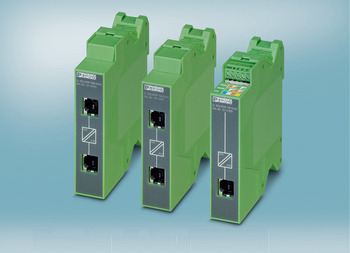Ethernet Isolator
An Ethernet or network isolator is a type of galvanic isolator used in copper-based Ethernet systems. It protects devices and users from possible differences in ground potentials of the voltages in two or more different circuits or circuit components. Ethernet isolators depend on electromagnetic induction to bridge a physical isolation gap within Ethernet systems and do not require any external power supply other than the energy being transferred across the Ethernet cable itself.
How Ethernet Isolators Work
An Ethernet isolator separates the electrical currents of multiple devices, circuits, or circuit components by using the electricity in one circuit to induce an electromagnetic current in another circuit, without allowing the two circuits to physically contact each other. This prevents circuit overloads and allows the Ethernet system to maintain an appropriate current in all circuits without leaking any current to external devices or the user.
Applications
Ethernet isolators are used in a wide variety of applications, but mostly in the medical industry. This is because medical equipment, such as heart monitors, breathing pumps, organ simulators, and other crucial devices, are often connected to a network so that doctors and other medical personnel can observe and/or control patient conditions from a central location. When there are power spikes or interferences from other systems such as personal computers, leaked current can flow through the patient and may be life threatening. Ethernet isolators are also used in other remote monitoring as well as regular Ethernet systems in order to shield Ethernet cables from current overloads.
Advantages
Ethernet isolators can be used in a wide variety of situations and can be customized to work under specific conditions. They are also relatively small and inexpensive to implement in system-wide circuits, allowing virtually all medical institutions to protect their patients and equipment from electrical interference. Ethernet isolators can also be used in conjunction with isolation transformers that specifically regulate the output current and voltage of electricity after it has been electromagnetically induced.
Disadvantages
Medical-grade Ethernet isolators must follow much stricter regulations concerning the isolation level that an Ethernet isolator provides. While this is beneficial to the medical industry, it also requires that all network components, such as network cards, connected to medical equipment must also follow these regulations.


Comments - No Responses to “Ethernet Isolator”
Sorry but comments are closed at this time.